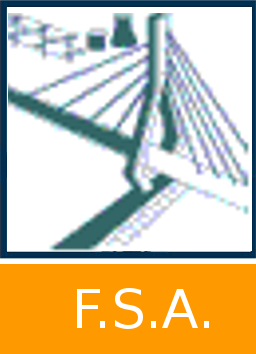Sena Batista, Huggo 
Promoteur(s) : Graczyk, Tadeusz
Date de soutenance : 2012 • URL permanente : http://hdl.handle.net/2268.2/6102
Détails
| Titre : | Analysis and prediction of welding deformations of ship panels in prefabrication process |
| Auteur : | Sena Batista, Huggo 
|
| Date de soutenance : | 2012 |
| Promoteur(s) : | Graczyk, Tadeusz |
| Membre(s) du jury : | Kothe, Ulrich |
| Langue : | Anglais |
| Nombre de pages : | 99 |
| Discipline(s) : | Ingénierie, informatique & technologie > Ingénierie civile |
| Public cible : | Chercheurs Professionnels du domaine Etudiants |
| Institution(s) : | Université de Liège, Liège, Belgique |
| Diplôme : | Master de spécialisation en construction navale |
| Faculté : | Mémoires de la Faculté des Sciences appliquées |
Résumé
[en] In the shipbuilding industry problems related to the welding process are very often identified,
especially because it must fulfil several requirements as for design as for production,
moreover it needs to be performed under strict supervision and also by very skilled workers.
Intending to minimize the effects caused by the welding in the shipyards, over the year many
works have been developed showing methods to predict and mitigate these effects, mainly
through Finite Element Analyses where is possible to verify points of improvement along the
welding process, for example in terms of process sequence or welding parameter.
In this current work is proposed a practical way to predict the welding-induced deformation of
5-mm-thick steel ship panels prefabricated in a traditional Polish shipyard through a number
of experiments and data collection performed on the butt welding line using Submerged Arc
Welding (SAW). For these experiments a Design of Experiment (DoE) has been organized so
as to get different condition of welding energy as well as the values of the pressure applied by
the devices used during the welding and then different trials and data collection were carefully
carried out in the shipyard to realize what are the most important welding parameter which are
contributing for the problem (welding deformation). The data available have been analyzed by the statistical software Design-Expert® and considerations about data arrangement have also
been done aiming to provide the best condition to describe the welding deformation.
As a result this work provides an approach to predict the welding-induced deformation within
the workshop by way of numerical equation where the main welding parameters were taken
into account and dully weighted by the software. Some partial evaluations of the accuracy of
the equations were achieved and their results considered satisfactory regarding to the
comparison between the actual values versus predicted values. Another important issue
reached is the data arrangement used to compute the welding deformation and finally this
thesis is completed with recommendations and suggestions for the future investigation.
Fichier(s)
Document(s)
Citer ce mémoire
L'Université de Liège ne garantit pas la qualité scientifique de ces travaux d'étudiants ni l'exactitude de l'ensemble des informations qu'ils contiennent.


 Master Thesis Online
Master Thesis Online




